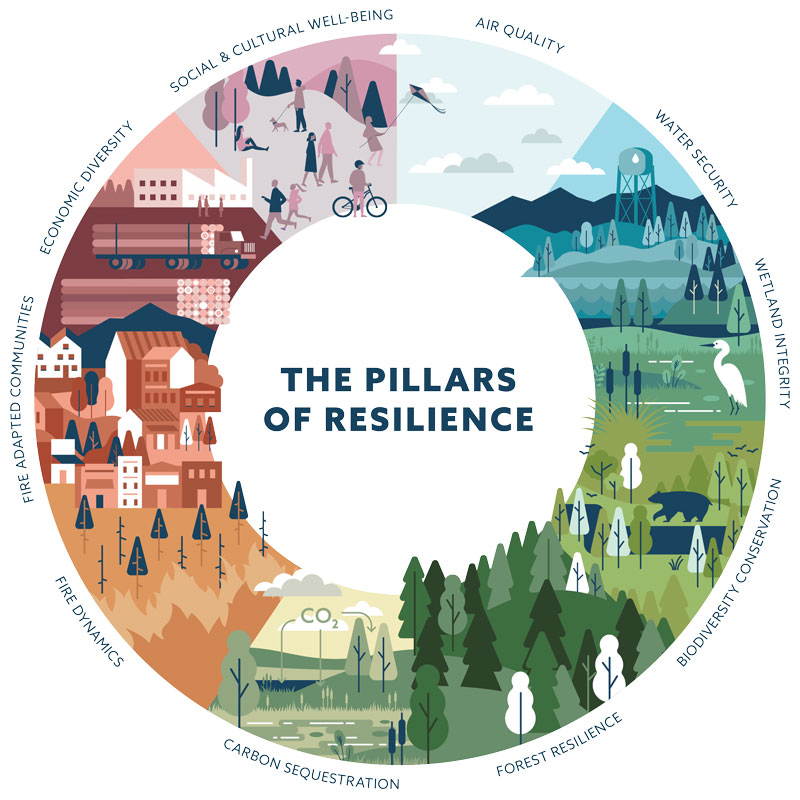learn more about forest resilience
Home
The Wildlife Resilience Project

Sierra Nevada forests are important cultural, economic, and ecological systems. Fire, disease, pests, and drought are naturally occurring disturbances in these forests. However, more than a century of fire suppression and climate change has amplified the intensity and duration of these disturbances and threaten forests. In the face of these mega disturbances, one of the goals of forest management is to support the health and resilience of habitats.
Resilience is the ability of an ecosystem to persist, rebound, or regenerate after disturbance.
Measures of resilience often focus on structural elements (e.g., tree density) or on a few individual species (e.g., top predators or keystone species) with inferred influence on the rest of the community, but what about biodiversity? Inherently, we know that biodiversity and resilience are linked, but quantifying those connections can prove difficult. Considering all species (trees, mammals, birds, butterflies, etc.) and their interactions is critical to efforts to quantify resilience and improve our ability to understand how wildlife communities will respond to disturbances in the future.

Integrating biodiversity into plans for resilience management will provide a more holistic picture of wildlife communities and will be critical for how we track, regenerate, and steward forests to be more resilient into the future. To achieve this, our team from the United States Forest Service and the California Academy of Sciences is working to measure wildlife communities’ resilience by borrowing methods from paleontology (Roopnarine and Dineen 2018) to develop models of interacting wildlife species for different Sierra Nevada forests. This work is made possible by generous funding from the Wildlife Conservation Board (see About for more information).
This website gives an overview of the basic background and process to create metrics of wildlife resilience for a large region in the central Sierra Nevada. To learn more follow the links on this page.






